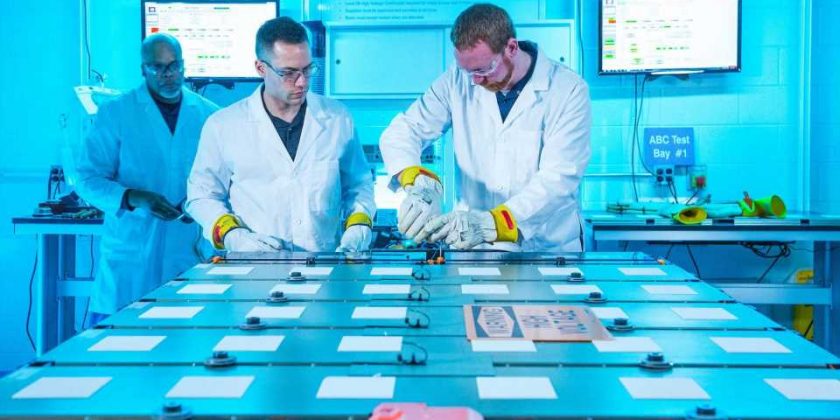GM says its system developed in collaboration with Analog Devices, Inc. will be an industry first.
On the heels of this week’s announcement that General Motors is acquiring a stake in hydrogen-electric truck startup Nikola, GM has more future EV info to share. If you haven’t heard the news, the Big Three automaker plans to build the Nikola Badger electric truck and share technology with Nikola. Perhaps most importantly, GM’s Ultium battery platform will be utilized for the project.
Fast-forward to today, and GM has published a press release about its upcoming wireless battery management system (wBMS), which it claims will be an industry first. The wBMS, developed with Analog Devices, Inc., will allow GM to power a variety of electric vehicles via a “common set of battery components.” GM says it will also allow the company to bring new EVs to market faster. The press release explains:
“… time won’t be needed to develop specific communications systems or redesign complex wiring schemes for each new vehicle. Instead, the wBMS helps to ensure the scalability of Ultium batteries across GM’s future lineup, encompassing different brands and vehicle segments, from heavy-duty trucks to performance vehicles.”
GM has already worked to make its Ultium batteries flexible, meaning it can easily change chemistry over time. Adding the wBMS will allow its batteries to “easily receive new features as software becomes available.” The system will eventually be able to receive over-the-air software upgrades as well.
GM executive director of Global Electrification and Battery Systems Kent Helfrich shared:
“Scalability and complexity reduction are a theme with our Ultium batteries – the wireless battery management system is the critical enabler of this amazing flexibility. The wireless system represents the epitome of Ultium’s configurability and should help GM build profitable EVs at scale.”

The advanced system will be able to conduct its own real-time battery health checks and balance battery chemistry within individual cell groups. In addition, it reduces wiring by as much as 90 percent, which leads to lighter vehicles with longer electric range estimates. It also creates additional space inside a vehicle. Finally, the wBMS “provides a unique repurposing capability for battery reuse in secondary applications more easily than conventional wired monitoring systems.”
GM says the wBMS will be standard on all Ultium-powered vehicles, which makes it seem as if it will also be standard on the upcoming Nikola Badger. However, that information isn’t provided in the current press release.
Source: Read Full Article
